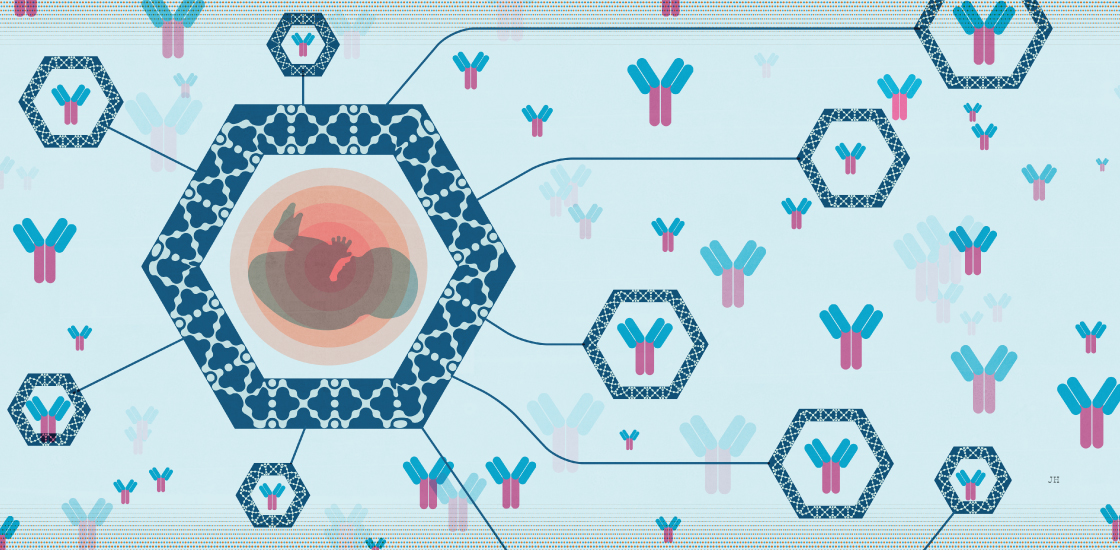Small sponge may sop up maternal antibody tied to autism
Researchers have created a microscopic particle that traps immune molecules found in a woman that are linked to autism in her child.

Researchers have created a microscopic particle that traps immune molecules found in a woman that are linked to autism in her child1.
The experiments occurred in a dish, and no clinical application is imminent. But the work offers proof of principle that giving a particle like this to pregnant women could prevent the immune molecules from harming the fetal brain.
“It’s still the early phase, but it’s a very promising first step,” says lead researcher Jamal Lewis, assistant professor of biomedical engineering at the University of California, Davis. “We have to go 10 steps more.”
There is no evidence so far that the nanoparticles are beneficial. In fact, they may be harmful: They are fatal to pregnant mice in high doses, the researchers found.
“Any treatment [given] to pregnant mothers inherently raises potential safety concerns. I would be very cautious,” says Jun Huh, assistant professor of immunology at Harvard University, who was not involved in the work.
Research suggests that antibodies in a pregnant woman that are released in response to, say, an infection, could interfere with fetal development and may even lead to autism.
Studies of pregnant mice have suggested that a mixture of seven antibodies triggers autism-like behaviors in the mice’s pups2. The new nanoparticles trap one of these antibodies, which targets a protein called lactate dehydrogenase B.
Safety first:
The nanoparticles are made from iron oxide and measure, on average, 15 nanometers across, about one-thousandth of the width of a human hair. They carry a portion of lactate dehydrogenase B and are coated with a molecule called dextran, which prevents them from sticking together and obstructing blood vessels.
The nanoparticles act as scavengers, with the lactate dehydrogenase B portion ensnaring the corresponding antibodies in blood.
The nanoparticles trapped 90 percent of the target antibodies in dishes containing the blood of either of two women who each have an autistic child. A control nanoparticle carrying a different protein did not clear the antibodies, the researchers reported in July in Nanomedicine.
Removing dangerous antibodies is smart, but it is unclear whether the one targeted in this study has strong ties to autism, says Lior Brimberg, assistant professor of neuroimmunology at the Feinstein Institute for Medical Research in Manhasset, New York, who was not involved in the research.
The researchers tested the technique’s safety by injecting pregnant mice with different doses of nanoparticles. The mice that received the highest dose died, but those given less than half that dose showed minimal to no side effects.
The researchers did not test the technique’s effectiveness in mice with antibodies tied to autism. They also have not looked at whether the nanoparticles prevent the antibodies from traversing the placenta to the fetus.
“The very big missing part is looking at the placenta itself and looking at what happens when you actually have the antibody,” Brimberg says.
Lewis says his team plans to give the nanoparticles to pregnant mice with the antibodies and assess the effect on the pups.
References:
Recommended reading

Expediting clinical trials for profound autism: Q&A with Matthew State

Too much or too little brain synchrony may underlie autism subtypes
Explore more from The Transmitter

Mitochondrial ‘landscape’ shifts across human brain

